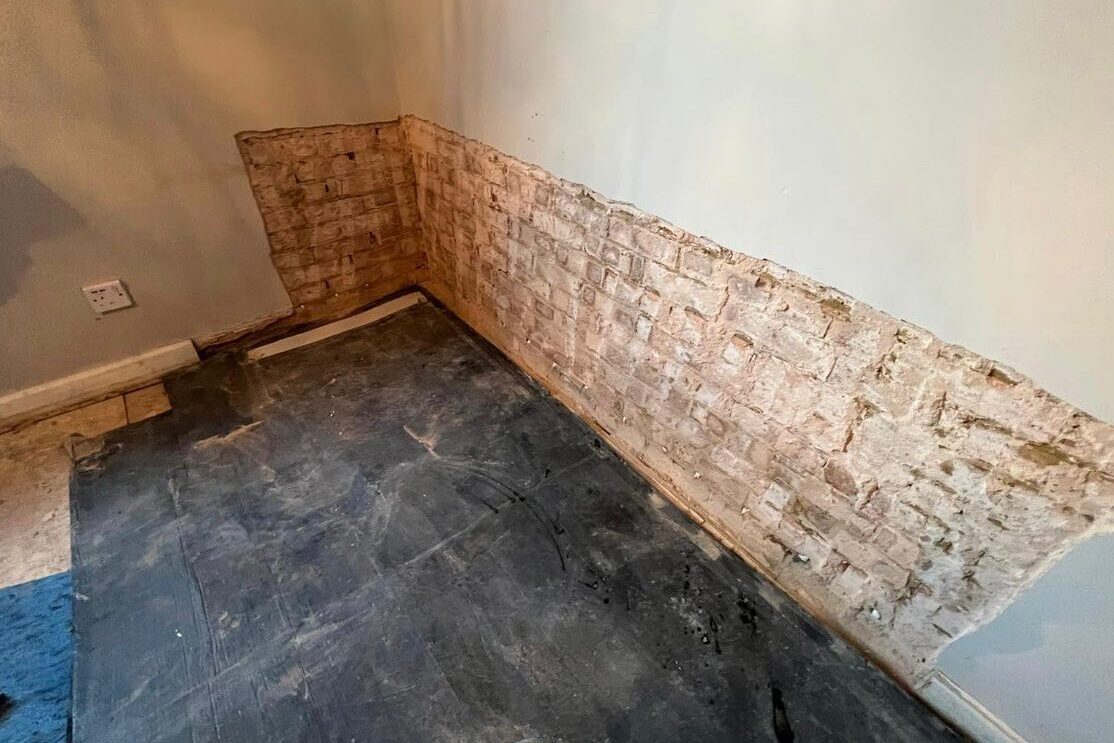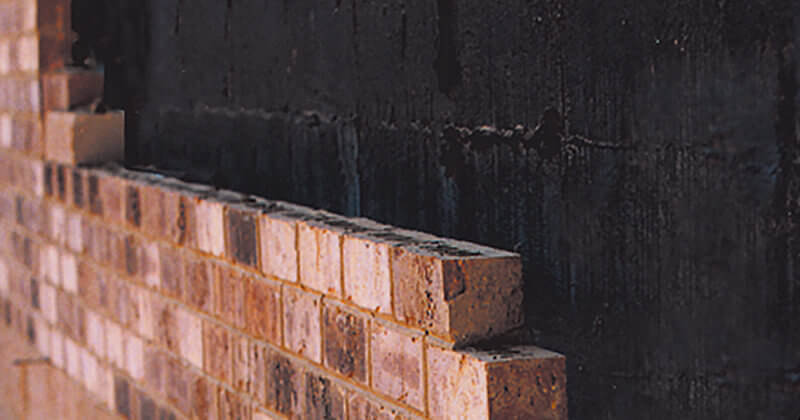Checking Out the Various Methods and Solutions for Effective Damp Proofing
Moisture in buildings postures significant obstacles to both architectural stability and indoor air quality. Various techniques and options have actually emerged to combat this prevalent concern. From conventional damp-proof membrane layers to cutting-edge chemical therapies, each method provides special benefits. Recognizing these alternatives is necessary for reliable wetness control. Selecting the best service depends on certain building conditions and requirements, motivating further exploration right into the most reliable damp proofing techniques offered.
Understanding the Causes of Moisture
Dampness can develop from different resources, understanding these causes is essential for efficient remediation. Commonly, wetness stems from three key resources: rising wet, permeating damp, and condensation. Climbing damp happens when groundwater travels upwards via porous materials, such as block or rock, often as a result of a lack of a reliable barrier (damp specialist newcastle). Passing through damp is commonly brought on by external factors, consisting of roofing system leakages, malfunctioning seamless gutters, or harmed wall surfaces, enabling water to infiltrate a building. Condensation, on the other hand, results from excess moisture airborne, frequently intensified by bad ventilation and temperature level distinctions, causing water droplets creating on surface areas. Identifying these underlying problems is crucial, as each kind of moisture needs a tailored strategy for remediation. Proper analysis assists in figuring out the most efficient remedies, eventually securing the architectural stability of a building and improving indoor air top quality
Conventional Damp-Proof Membrane Layers

Chemical Damp-Proofing Solutions
Chemical damp-proofing remedies supply an ingenious strategy to avoid moisture invasion in buildings. These approaches typically entail the application of liquid chemicals that pass through masonry and create an obstacle against increasing damp. Generally made use of chemicals include silanes, siloxanes, and other water-repellent representatives that react with surface materials to produce a hydrophobic layer.The application procedure usually needs exploration openings right into the wall surfaces, infusing the chemical solution, and permitting it to cure. This approach is specifically advantageous for older structures where standard damp-proof membranes may be impractical. Chemical damp-proofing can be less turbulent and more economical than considerable renovation projects.While reliable, these services depend on appropriate application and environmental conditions for peak performance. mould treatment newcastle. Normal maintenance and surveillance are important to guarantee the long life of the damp-proofing treatment. In general, chemical damp-proofing represents a flexible choice for protecting buildings against moisture-related damage
Dental Caries Wall Construction Techniques
Tooth cavity wall surface building and construction strategies supply countless benefits, specifically in dampness control and power performance. By integrating an air space in between 2 layers of masonry, these walls properly alleviate water access while improving insulation. This combination not just protects structures from dampness but also contributes to decreased power intake.
Advantages of Tooth Cavity Walls
When considering efficient moist proofing techniques, the benefits of tooth cavity wall surfaces stand apart prominently. Dental caries walls contain 2 different layers, developing an air gap that effectively decreases wetness infiltration. This design lessens the risk of wetness, as the external wall surface functions as a barrier versus rain and water ingress. Furthermore, dental caries walls boost thermal insulation, which adds to energy efficiency by decreasing warmth loss. They also give sound insulation, aiding to create a quieter indoor atmosphere. The air gap allows for ventilation, which assists in dampness control and lowers the probability of mold development. These advantages not only enhance the overall convenience of a building however likewise add to its longevity and structural stability.
Dampness Control Strategies
Efficient dampness control approaches are important in cavity wall surface building and construction to ensure lasting protection versus moisture. One key approach involves the consolidation of weep holes, which promote water drainage from the tooth cavity, preventing accumulation. Additionally, the usage of breathable membrane layers can aid manage moisture degrees while permitting entraped vapor to get away. Proper positioning of insulation is additionally important, as it must not obstruct water drainage paths. Guaranteeing that the outer leaves of the dental caries wall are created with water-resistant materials boosts general longevity. Normal upkeep checks are vital to recognize any type of clogs or damages early, protecting the structure's check here stability. Ultimately, a mix of these techniques develops a durable defense against dampness intrusion in tooth cavity walls.
Insulation and Power Effectiveness
Insulation plays an essential role in enhancing power performance within tooth cavity wall surface building. By incorporating protecting materials, these wall surfaces develop a thermal barrier that reduces heat loss and decreases power consumption. Efficient insulation not just assists keep a secure indoor temperature yet also minimizes the danger of wetness, as it stops condensation within the wall surface dental caries. Various techniques, such as making use of inflexible foam boards or mineral wool, can be used to accomplish perfect insulation efficiency. Additionally, proper installation is vital to ensure that voids and voids are decreased, which can or else jeopardize power efficiency. Eventually, a well-insulated tooth cavity wall adds greatly to total sustainability and decreases heating & cooling costs for house owners.
Outside Damp Proofing Techniques
Exterior moist proofing techniques are crucial for shielding frameworks from dampness seepage. Two effective strategies consist of the application of water-proof membranes and the installation of French drains. These options help minimize water buildup and preserve the honesty of buildings.
Waterproof Membrane Application
While various methods exist for stopping wetness ingress, the application of waterproof membranes remains an extremely reliable outside wet proofing strategy. These membrane layers are commonly made from products such as polyethylene, rubber, or changed bitumen, offering a robust barrier against water penetration. The installment process entails using the membrane to the outside surfaces of walls or foundations, ensuring complete protection to avoid leakages. Correct adhesion and sealing at joints are crucial to taking full advantage of effectiveness. Water-proof membrane layers can be applied in different forms, including fluid layers and sheet membrane layers, enabling for flexibility based upon the certain demands of the structure. This technique not just protects structures from wetness yet additionally enhances their durability and structural honesty.
French Drainpipe Installation
One effective method for taking care of groundwater and preventing moisture accumulation around a structure's structure is the installment of a French drain. This water drainage system contains a trench full of crushed rock and a perforated pipeline that redirects surface area water away from the foundation. Proper installation needs mindful preparation, guaranteeing that the drainpipe inclines away from the structure to facilitate excellent water flow. Additionally, the place of the drainpipe is vital; it must be positioned in areas susceptible to pooling or excess moisture. Routine upkeep, including clearing up debris from the crushed rock and guaranteeing the pipeline remains unobstructed, is essential for long-term efficiency. Eventually, a well-installed French drain can greatly reduce the risk of water-related concerns in foundations and basements.
Interior Waterproofing Methods
Inside waterproofing techniques are important for securing a building's inside from dampness seepage and prospective water damage. These methods typically entail the application of customized materials and techniques designed to create a moisture obstacle within the framework. One usual approach is the use of water-proof finishings or sealants on wall surfaces and floorings, which stop moisture from penetrating surfaces.Additionally, mounting interior drain systems, such as sump pumps, can effectively manage water accumulation in basements and creep areas. Another method includes making use of vapor barriers, which are set up to prevent wetness activity from the ground right into living spaces.Moreover, addressing any type of splits or spaces in wall surfaces or foundations with proper sealers ensures a complete protection versus water invasion. By implementing these indoor waterproofing approaches, building proprietors can significantly reduce the danger of mold development, structural damage, and other moisture-related issues. Correct implementation of these methods is essential for long-lasting protection and structure integrity.
Regular Upkeep and Inspection Practices
Routine maintenance and assessment techniques are important for ensuring the long-term effectiveness of moist proofing remedies in any kind of building. Regular checks enable homeowner to recognize very early indicators of dampness breach, such as peeling off paint, mold growth, and musty smells. These indicators can signal underlying issues that require instant attention.Inspections need to be carried out at least every year, concentrating on vulnerable areas like cellars, creep rooms, and exterior walls. Throughout these analyses, home owners should take a look at sealants, drainage systems, and air flow to validate they work correctly.Additionally, preserving downspouts and seamless gutters is crucial, as clogged systems can result in water build-up near the foundation. Carrying out a normal maintenance schedule, in addition to prompt repair work, can substantially expand the lifespan of moist proofing measures and secure the architectural integrity of the structure. Proactive actions ultimately contribute to the total health and wellness of the living setting.
Often Asked Concerns
How Lengthy Does Damp Proofing Usually Last?
The period of damp proofing efficiency varies, generally lasting in between 20 to 50 years. Variables such as application top quality, ecological conditions, and upkeep practices substantially influence the longevity of the moist proofing treatment.

Can I Damp Evidence My Home Myself?
The specific considered the feasibility of DIY damp proofing. With appropriate research and the ideal materials, it is feasible. They also recognized the value of professional support to ensure long-lasting effectiveness and stop future concerns.
What Are the Signs of Inefficient Damp Proofing?
Indicators of ineffective damp proofing consist of relentless musty odors, noticeable mold and mildew development, peeling paint, wet patches on wall surfaces, and wood degeneration - damp proofing newcastle. Home owners need to attend to these concerns quickly to protect against further damages and health and wellness issues
Does Damp Proofing Affect Indoor Air Top Quality?

Just How Much Does Specialist Damp Proofing Cost?
Expert damp proofing costs vary substantially, commonly ranging from $1,000 to $5,000 depending upon the home's size, the extent of the moist problem, and chosen approaches. Each circumstance calls for a tailored analysis for accurate rates. Frequently, wetness originates from 3 key resources: climbing moist, permeating wet, and condensation. When taking into consideration effective moist proofing methods, the advantages of dental caries wall surfaces stand out prominently. Exterior damp proofing methods are necessary for shielding frameworks from wetness infiltration. While numerous techniques exist for protecting against moisture ingress, the application of waterproof membrane layers remains a highly effective exterior moist proofing method. Indicators of inadequate moist proofing consist of relentless stuffy smells, noticeable mold and mildew development, peeling paint, damp patches on walls, and wood degeneration.